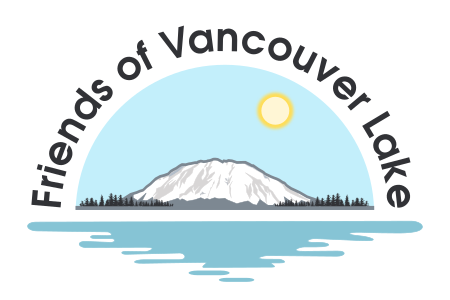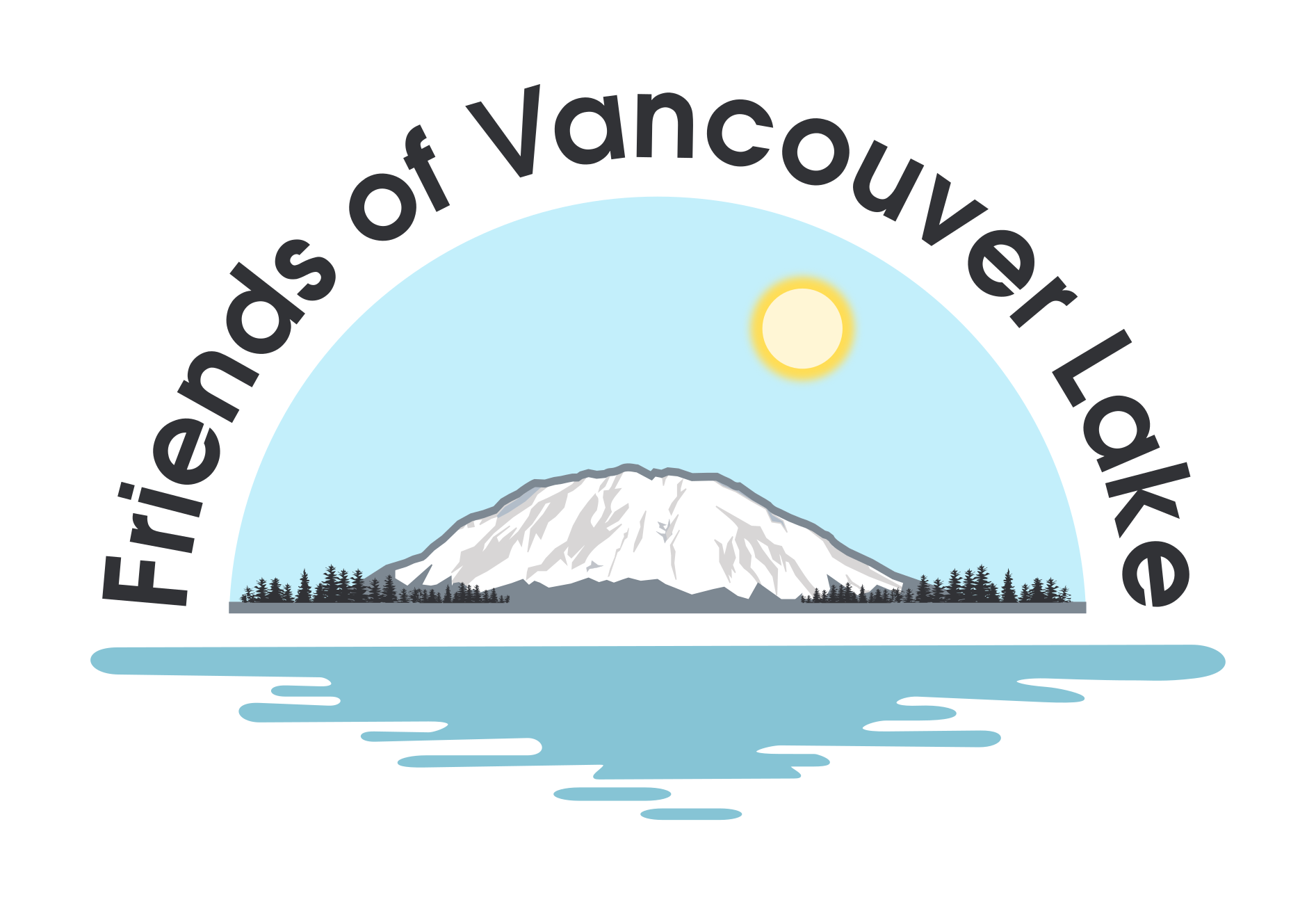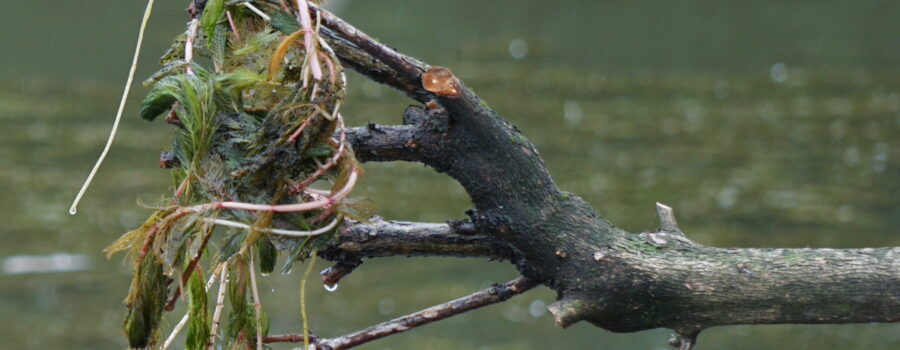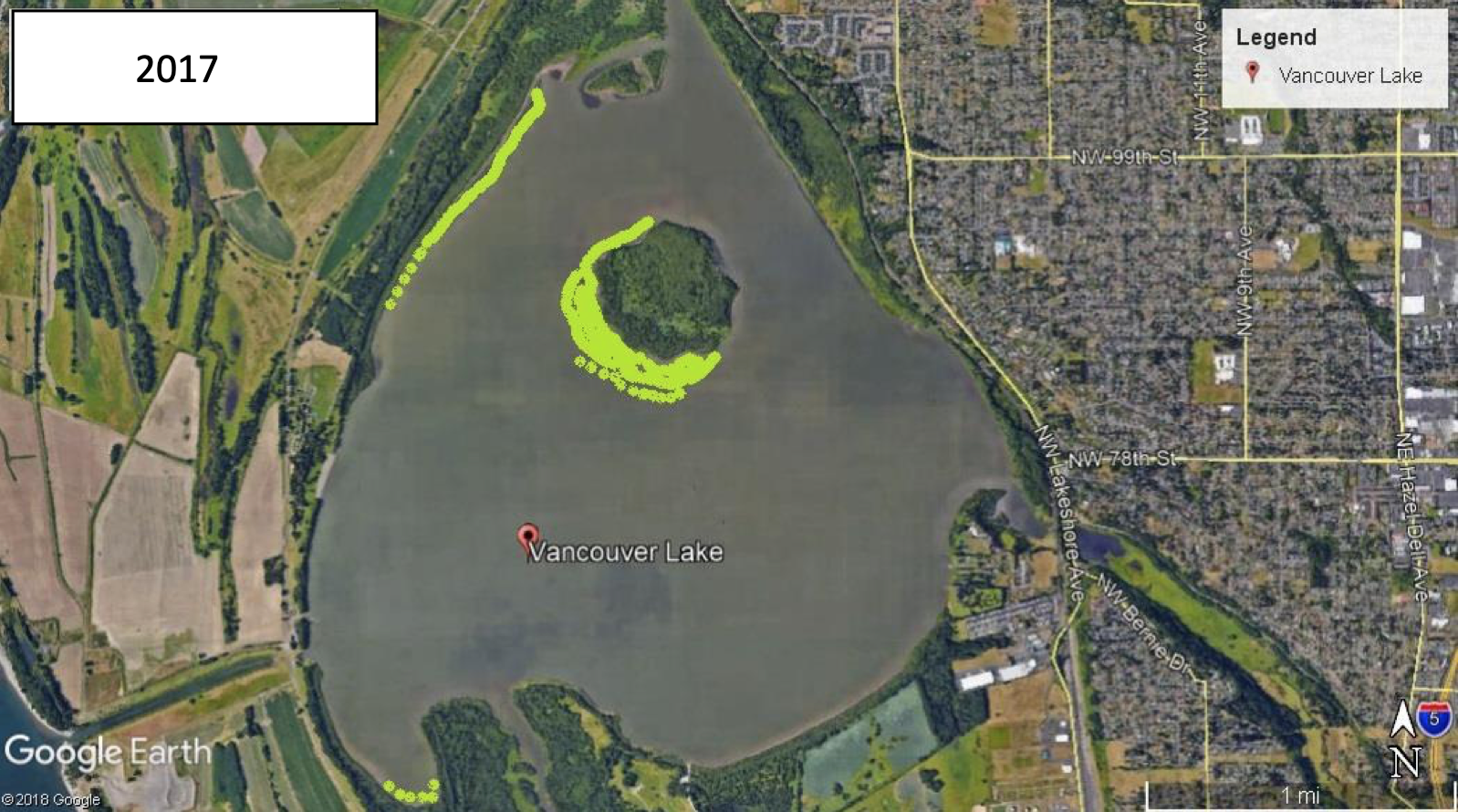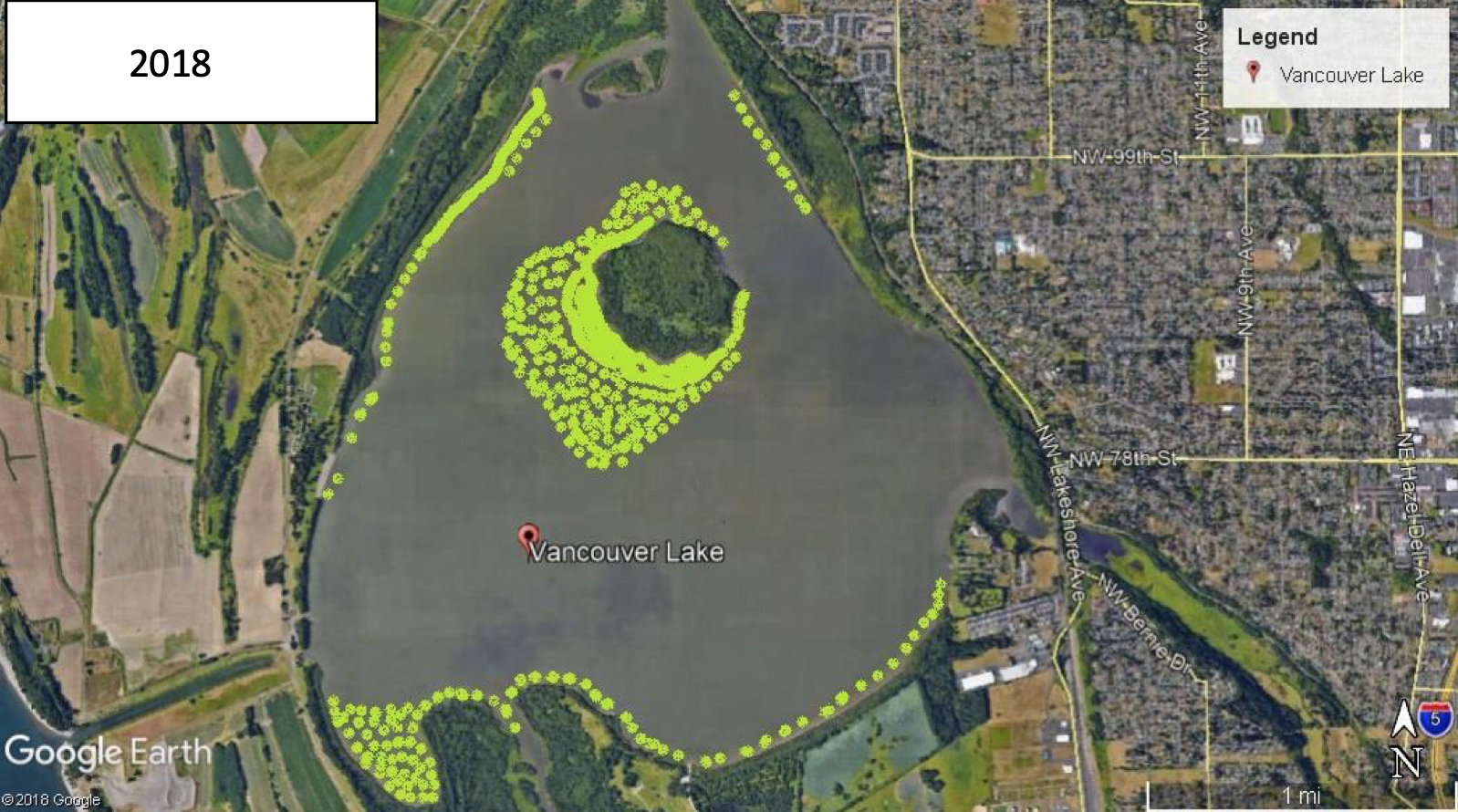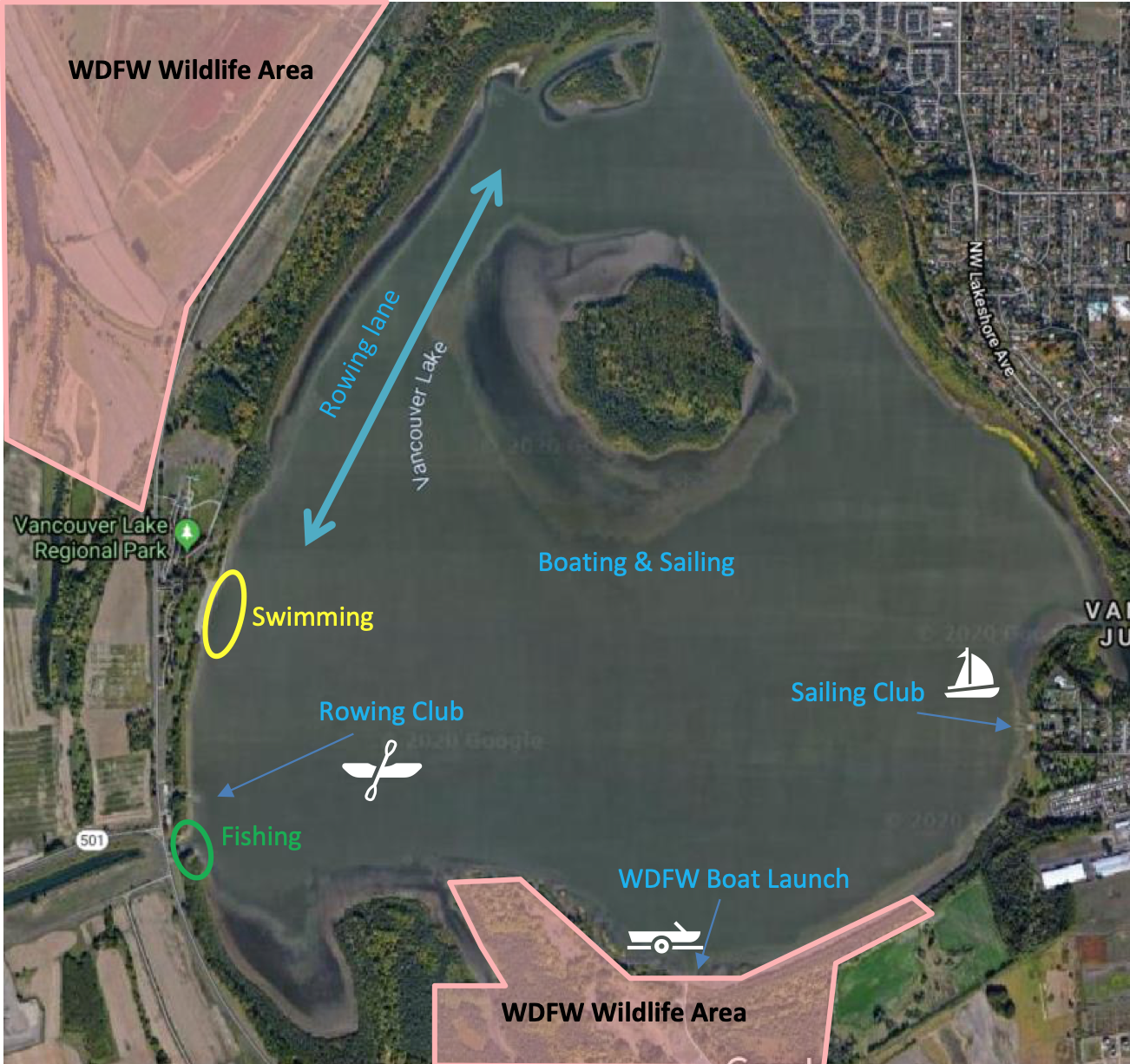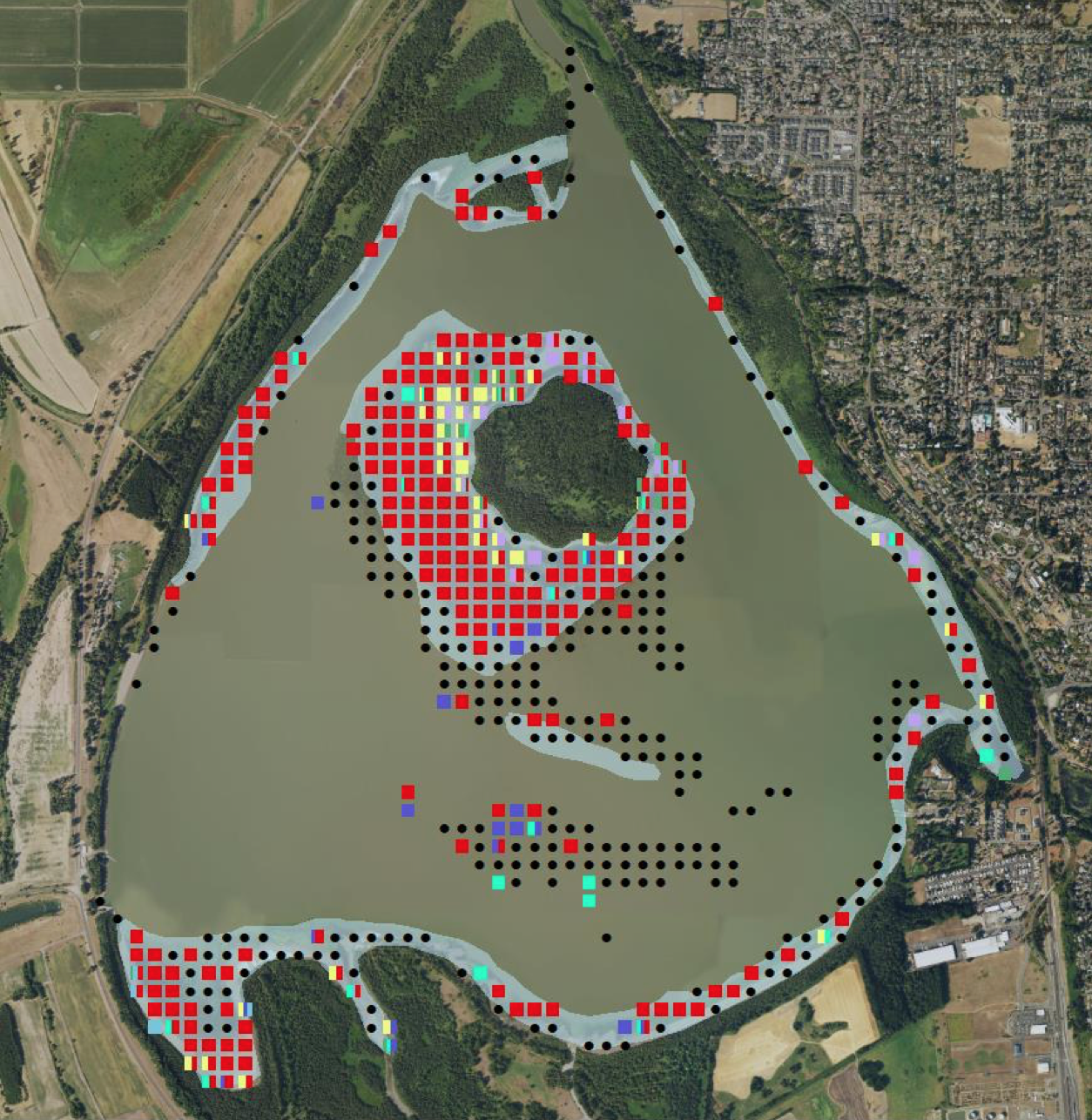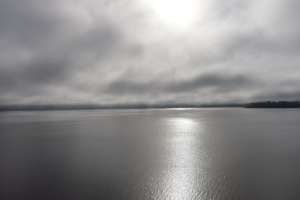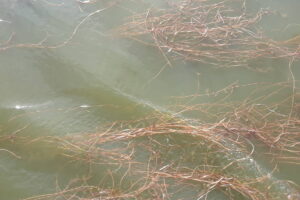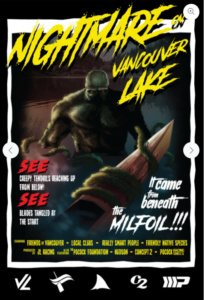
Limited Edition t-shirt designed by JL Racing to help support our fundraising efforts in 2019! Support for local, regional and national rowing clubs supported our successful treatment in 2020!
The Friends of Vancouver Lake formed in 2017 to address an ever-expanding threat to Lake users and the Lake itself – Eurasian Watermilfoil. Although milfoil is present in bodies of water throughout Washington State and is an invasive aquatic plant designated for control, survey and treatment efforts can be costly and local attention and resources can fall short, leaving the weed to quickly multiply.
When local agencies failed to address the milfoil problem, Friends stepped up to bring local and state agencies together to raise funds, gain a state permit and successfully treat the problem in 2020. The $157,000 treatment was made possible by the support of local agencies, foundations and businesses and members of the community!
Successful treatment of the milfoil problem demonstrated that our community can band together to address challenges that threaten our Lake!
As part of the ongoing and revitalized effort to address invasive weeds in our Lake, Clark County – with help from Friends and other community groups – created a new Invasive Aquatic Vegetation Management Plan, dubbed the IAVMP – to survey and treat invasive aquatic plants as they emerge.
Milfoil Treatment, July 2020
After years of research and planning, Friends of Vancouver Lake orchestrated an important step toward greater accessibility for the lake in July, 2020. Aquatechnex, based in Bellingham with offices along the West Coast, had workers steer boats around the lake Tuesday, injecting the herbicide ProcellaCOR to treat the infestation.
In 2017, Friends of Vancouver Lake (a volunteer 501 (c3) organization) observed widespread Myriophyllum spicatum, (also known as Eurasian watermilfoil, milfoil, or EWM) in Vancouver Lake for the first time. Washington Department of Ecology, (Ecology) also noted EWM in Vancouver Lake in 2007. Since that time the infestation in Vancouver Lake has grown exponentially.
In 2019, two separate surveys with different methods were used to assess the level of lake acreage affected. A survey by Aquatechnex used drone photography and boat mounted DGPS (differential geographic positioning system) to draw boundaries around milfoil beds. The other survey, by state and county agencies, used a point intercept method. Both surveys produced similar results and were complimentary, (Figure 10). The area infested by milfoil based on the surveys is thought to not be less than 614 acres.
The infestation is primarily concentrated in the center of the lake, around Turtle Island in water less than four-feet deep. Milfoil is also concentrated at the southwest corner of the lake, near the flushing channel, and around the edges of the lake. These other noxious weeds are also present in Vancouver Lake: Lythrum salicaria, (purple loosestrife); Phalaris arundinacea, (reed canarygrass); Iris pseudacorus, (yellow flag iris); Potamogeton crispus, (curly leaf pondweed). Of these species, EWM has spread the most since first detection and is illustrated by comparing Figure 1, Figure 2, and Figure 10.
Milfoil causes recreational, economic and ecological damage by changing how residents, visitors, and wildlife use and enjoy infested lakes. It overtakes habitat and outcompetes native aquatic plants, lowering plant species diversity (Madsen et al., 1991). Dense mats of EWM at the water’s surface inhibit all water recreationists such as swimmers, rowers, sailors, paddlers, anglers, and hunters.
Across Washington, the total direct impacts to boating from EWM are estimated at $5,140,000 (Cohen et al., 2017). Hunters using the WDFW wildlife area at the southern end of the lake have expressed fear of their dogs getting entangled in milfoil, or having difficulty walking through it themselves. The WDFW wildlife area at the end of La Frambois road is shown in Figure 5 along with the other beneficial use areas at Vancouver Lake.
Near Vancouver Lake’s center island (Turtle Island), especially the south and west sides of the island, large masses of Eurasian watermilfoil form acres of dense mats. The southwest shallow area of the lake also has a large infestation, and in general, the edges of the lake show some scattered infestations of EWM. These treatment areas are shaded white in Figure 10, to show that control efforts will focus there. However, EWM will be treated wherever it is found.
Figure 10 to the right shows the area affected by some level of milfoil in Vancouver Lake as estimated by two independent surveys. The small black circles indicate no plants were found by the state and county survey. The any red block indicates EWM present, as does the treatment area shaded white which is 614 acres.
